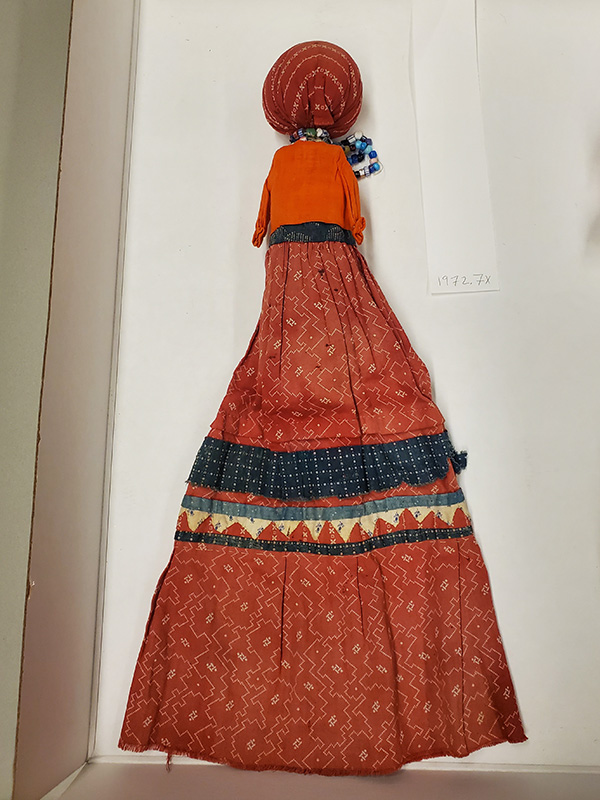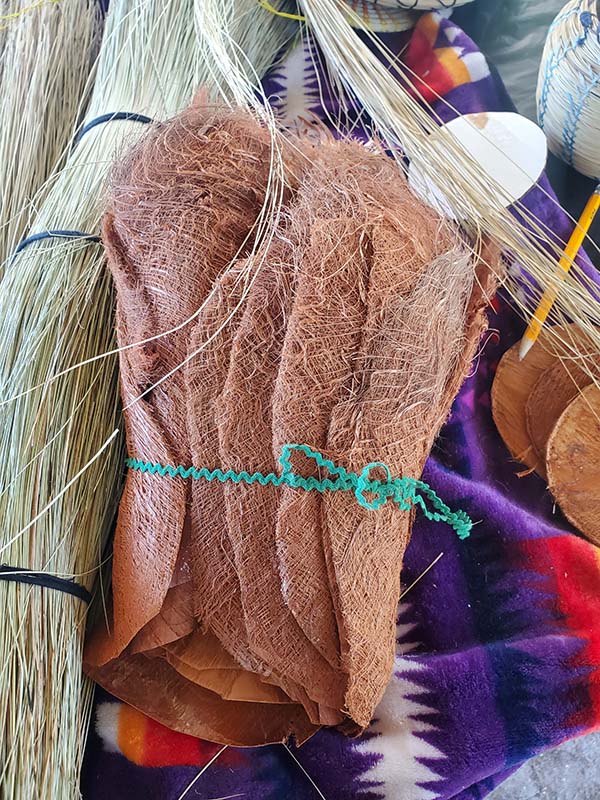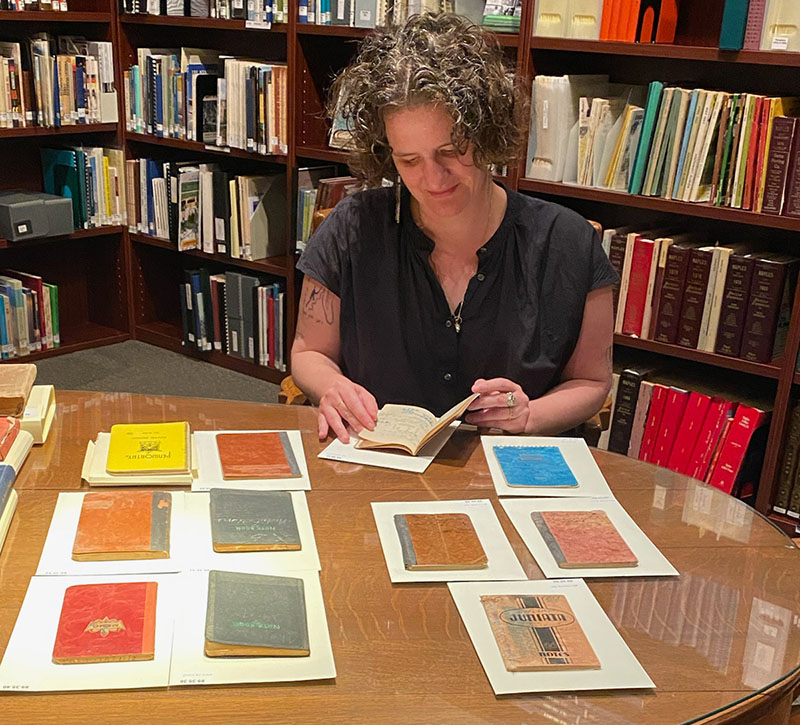The Seminole Doll: Crafting and Marketing
by Amanda Thompson
With the generous funding awarded through a Decorative Arts Trust Research Grant, I traveled to South Florida to learn about the history, crafting, and marketing of dolls made by peoples of the Miccosukee Tribe of Indians and the Seminole Tribe of Florida and their ancestors (all of whom I will refer to as Seminole, reflecting their shared culture and settler identification before the formation of the two tribes around 1960).1 This research contributes to my Bard Graduate Center dissertation in Decorative Arts, Design History, and Material Culture tentatively entitled “Crafting Settler Colonial Relations: Miccosukee and Seminole Arts in South Florida, 1880–1980” and particularly the chapter “Materializing Identity and Place in a Souvenir Palmetto Doll.”
At HistoryMiami—a South Florida historical society located in downtown Miami with extensive archives and collections, exciting programming, and curious and supportive staff— I visited with the earliest known extant Seminole doll (figures 1 and 2). She is made of trade fabric and hand-stitched, despite some Seminole people having had sewing machines for over a decade when she was acquired by a Miami settler around 1900. Her garments reflect Seminole fashion of the time. Her skirt is high-waisted, and flares long. It is decorated with a torn fabric ruffle at thigh level and horizontal bands of bias applique and needle-turn applique in a saw-tooth pattern, just like Seminole women’s skirts in the 1890s and 1900s.
This doll was made by the mother (whose name I unfortunately have not been able to learn) of Seminole Big Charlie’s daughter Darnassiee. According to a 1909 article, Darnassiee traded the doll with a settler and received “a gaudily dressed French doll for it, the little one agreeing but not altogether pleased until [a] doll carriage was added.”2
I highlight this exceptional doll in a historical survey of the form, along with wood dolls and the much more common dolls of palmetto fiber dressed in Seminole clothing, which Seminole women innovated to sell to tourists in the 1920s and still make to the present (figures 3 and 4).
Figure 3. Seminole Palmetto doll purchased at the Glade Cross Mission by historian Marjorie Stoneman Douglas and architect Marion Archie c. 1940, from HistoryMiami collection.
I also attended the Seminole Tribe’s Brighton Field Days where I spoke to two makers of palmetto dolls. As part of this public festival celebrating Seminole culture, they demonstrated the materials from which palmetto dolls are made, how they are crafted, and pointed out the saw palmetto plant from which the palmetto fibers are harvested (figure 5). I then understood how these dolls embody environmental knowledge and a connection to Seminole lands.
I visited the historic site of the Glade Cross Mission in Everglades City too. Episcopalian Deaconess Harriet Bedell founded the mission to both convert Seminole people to Christianity and market their crafts to provide them with incomes. At the well-organized archives of the Collier County Museums, I read through years of her account books (figure 6) where she logged Seminole women selling her dolls by the dozen and the amounts that she paid them. These notebooks illuminate both the surprising scale of the doll production and trade as well as the intimate relations Deaconess Bedell had with some Seminole doll makers.
The Decorative Arts Trust Research Grant has been critical to increasing my understanding of these dolls which Seminole women crafted as portraits of their own cultural distinction and sold to tourists by the thousands, becoming a consummate souvenir of South Florida.
1. Kersey, Harry A. 1996. An Assumption of Sovereignty: Social and Political Transformation among the Florida Seminoles, 1953-1979. Indians of the Southeast. Lincoln: University of Nebraska Press.
2. Qtd. Blackard, David M. 1990. Patchwork and Palmettos: Seminole/Miccosukee Folk Art since 1820. Fort Lauderdale: Fort Lauderdale Historical Society: 56.
Amanda Thompson is a PhD candidate at the Bard Graduate Center.
About The Decorative Arts Trust Bulletin
Formerly known as the "blog,” the Bulletin features new research and scholarship, travelogues, book reviews, and museum and gallery exhibitions. The Bulletin complements The Magazine of the Decorative Arts Trust, our biannual members publication.
Click Images to Enlarge
Did you know that clicking on the images in Bulletin posts will allow you to get a closer look? Simply click on an image, and a larger version will open in a pop-up window.













